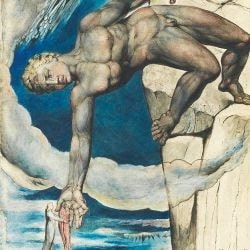Dopo anni di convivenza e di corrispondenza di amorosi sensi, si consuma finalmente il matrimonio artistico tra Carlo Bordini e Gianluca De Rossi, per la gioia di tutti gli appassionati del rock progressivo. Due artisti che non hanno certo bisogno di presentazione, visti i loro trascorsi in band come Rustichelli e Bordini, Goblin, Cherry Five e Taproban. Il frutto della loro unione è condensato in due lunghe ed entusiasmanti suite di quasi venti minuti di durata, scandite dagli immancabili tempi dispari, con i sintetizzatori monofonici e l’organo a tracciare le linee di basso. La trama sonora è resa più preziosa grazie all’utilizzo delle timbriche originali degli anni Settanta: organo Hammond C3, Mellotron M400 (Brass, Strings, Choir), Minimoog, piano Fender Rhodes, HohnerClavinet D6, pedaliera bassi MoogTaurus e string machine ElkaRhapsody 610. L’effetto all’ascolto è quindi caldo, gratificante, inebriante come un vino rosso d’annata: l’eleganza e la rigorosità del drumming di Bordini riporta alla mente quella di maestri come Carl Palmer, Bill Bruford o John Hiseman; la varietà sonora e l’energia di De Rossi non possono non far tornare alla mente le cavalcate infuocate all’Hammond del leggendario Keith Emerson o le evoluzioni al Minimoog di Rick Wakeman. Soprattutto, DE ROSSI E BORDINI ha il suo punto di forza nell’esemplare uso delle dinamiche e nella sapiente alternanza tra vuoti e pieni presente all’interno delle composizioni, ancora più mirabile se pensiamo che è il prodotto dell’interazione tra due soli musicisti. Due musicisti con la M maiuscola. Chapeau.
After years of coexistence and correspondence of loving senses, the artistic marriage between Carlo Bordini and Gianluca De Rossi is finally consummated, to the delight of all progressive rock fans. Two artists who certainly do not need introduction, given their past in bands like Rustichelli and Bordini, Goblin, Cherry Five and Taproban. The fruit of their union is condensed into two long and exciting suites of almost twenty minutes in duration, marked by the inevitable odd tempos, with the monophonic synthesizers and the organ tracing the bass lines. The sound texture is made more precious thanks to the use of the original timbres of the seventies: Hammond C3 organ, Mellotron M400 (Brass, Strings, Choir), Minimoog, Fender Rhodes piano, Hohner Clavinet D6, Moog Taurus bass pedal and Elka string machine Rhapsody 610. The listening effect is therefore warm, gratifying, intoxicating like a vintage red wine: the elegance and rigor of Bordini’s drumming brings to mind that of masters such as Carl Palmer, Bill Bruford or John Hiseman; the variety of sound and the energy of De Rossi cannot fail to bring to mind the fiery rides at the Hammond of the legendary Keith Emerson or the evolutions at the Minimoog of Rick Wakeman. Above all, DE ROSSI E BORDINI has its strong point in the exemplary use of dynamics and in the skilful alternation between empty and full present within the compositions, even more admirable if we think that it is the product of the interaction between only two musicians. Two musicians with a capital M. Chapeau.




